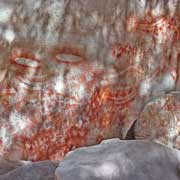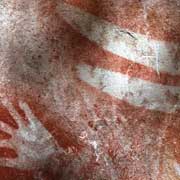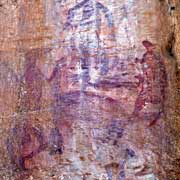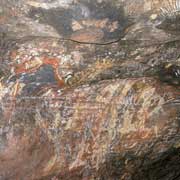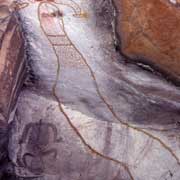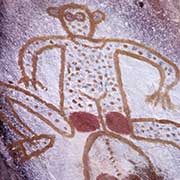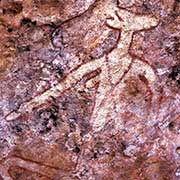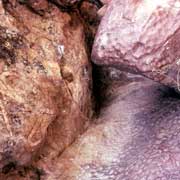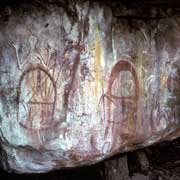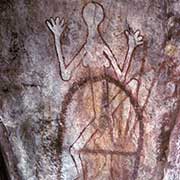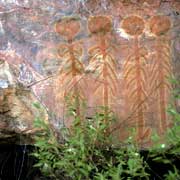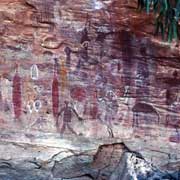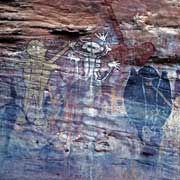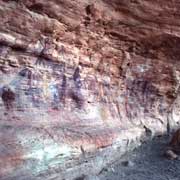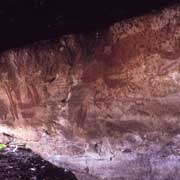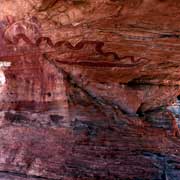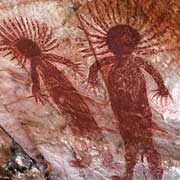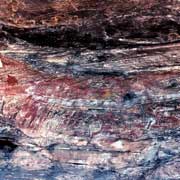Photos of Aboriginal Rock Paintings, Australia
Aboriginal Rock Paintings
Aboriginal mythological paintings may be found all over Australia and represent many different cultures. From time immemorial Aboriginal people have left their marks in caves on rocks and because rock is durable, we can still see today their rock paintings. Although many were made for ceremonial purposes, there are undoubtedly also markings just done for fun, like hand stencils and outlines of boomerangs. Some paintings are very ancient, executed many thousands of years ago. But not all paintings need to be that old: some were made within living memory.
you may then send it as a postcard if you wish.
The Kimberley Region in the north of Western Australia houses a rich variety of paintings; there are huge "Wandjina" spirit ancestors who are believed to have created landscape features and gave people their sacred laws. There are also paintings of snakes, considered fertility spirits. According to traditional beliefs, people's spirits are found in water holes and a woman will be fertilised by one of those spirit beings; the child's soul belongs to that place and will return there after death.
The Northern Territory is exceptionally rich in rock art, especially in places like Kakadu, Watarrka (Kings Canyon) and Uluru (Ayers Rock), but another example is Keep River National Park, on the border with Western Australia; the Nganalam Art Site has, among others an impressive painting of the Rainbow Serpent, a crucially important figure in Aboriginal mythology. Paintings can also be found in caves near Katherine, at Nitmiluk (Katherine Gorge), Kunminyini Springs, a small outstation of Yanyuwa people near Borroloola and on the Sir Edward Pellew Islands in the Gulf of Carpentaria, to mention just a few.
Carnarvon National Park in Central Queensland has some of the largest sites with rock art, Cathedral Cave, a massive rock shelter overlooking Carnarvon Creek, and the Art Gallery. These sites abound in stencils, made by blowing a mixture of red ochre and water from the mouth over hands and various objects, especially boomerangs, coolamons (wooden dishes), clubs and shields. There are also net-like figures, probably painted with twig brushes. Deposits found have been dated to 3,500 years ago.
Near the small town of Laura in southern Cape York, northern Queensland, are the extensive galleries of Split Rock and Guguyanlangi. There are all sorts of animals, reptiles and birds, sorcery figures and "Quinkans", stick-like figures, believed to be spirit beings who live in cracks in the rocks and roam about at night; they can attack people with stone axes they have on their elbows and knees. The galleries are very old and the site may have been used for 13,000 years; there are many layers of paintings although the age of the current paintings is unknown. There are caves with paintings as far north as Punsand Bay in northern Cape York Peninsula, the northernmost point of the Australian continent. Aboriginal rock art is truly everywhere, from there all the way to Tasmania.



